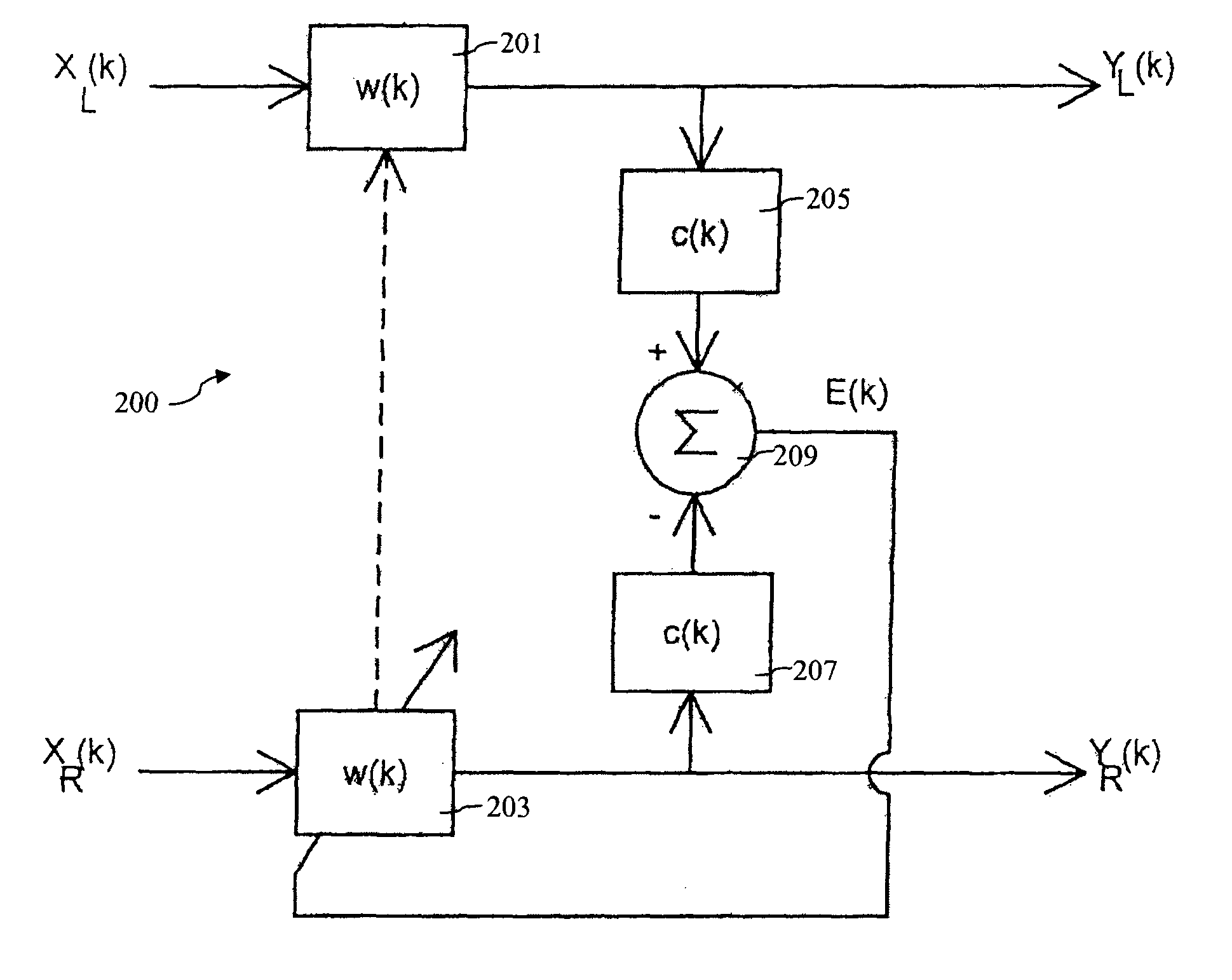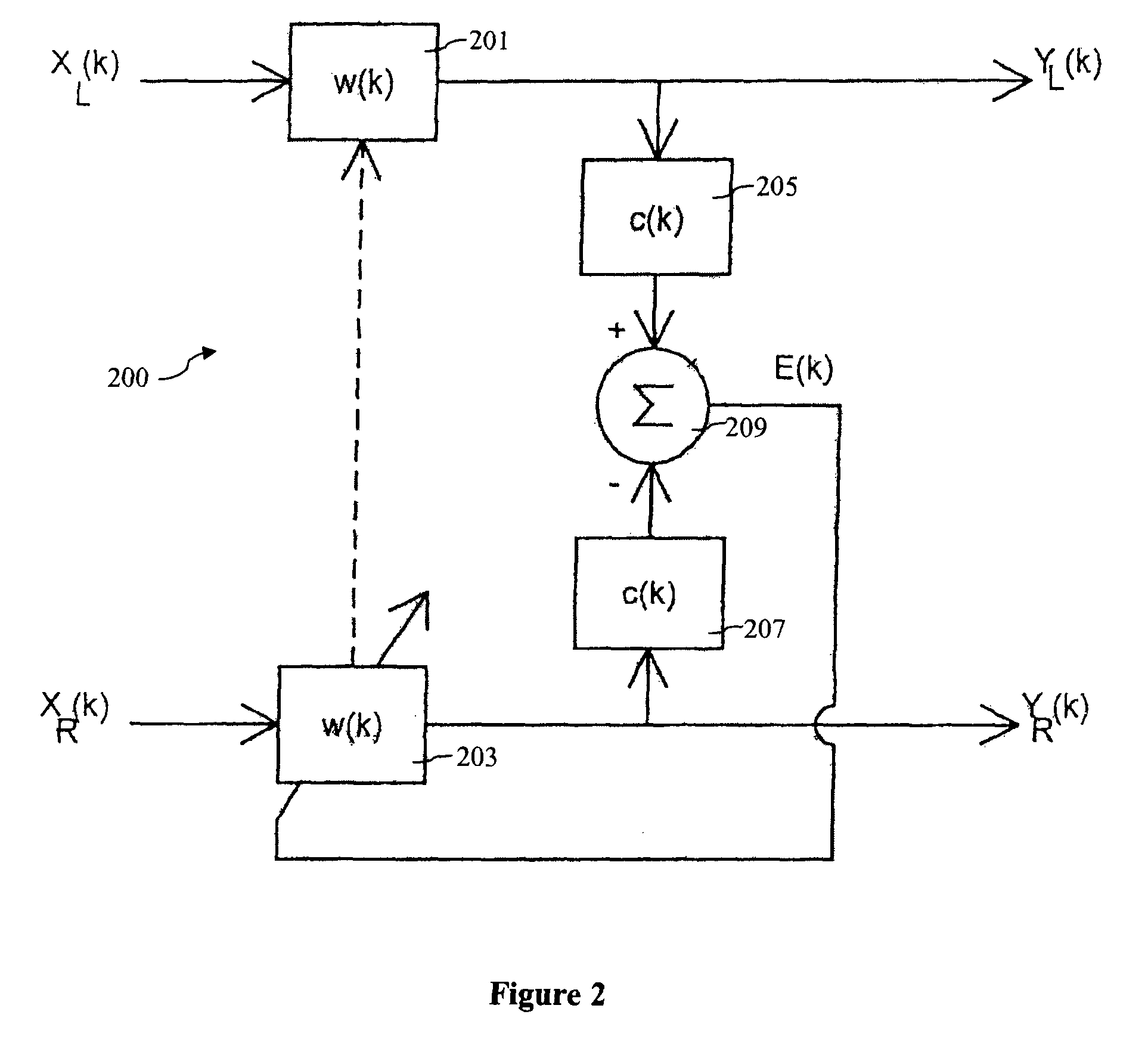Binaural signal enhancement system
a binaural signal and enhancement technology, applied in the direction of deaf-aid sets, transducer details, electrical transducers, etc., can solve the problems of many hearing-impaired individuals with loss of the dynamic range of sounds, inability to hear soft sounds with the same sensitivity as non-hearing impaired people, and many hearing-impaired individuals with loss of both ears. , to achieve the effect of enhancing binaural input signals, reducing interference effects, and reducing processing ar
- Summary
- Abstract
- Description
- Claims
- Application Information
AI Technical Summary
Benefits of technology
Problems solved by technology
Method used
Image
Examples
Embodiment Construction
Optimal Signal Match
[0045]To address the problems experienced by the conventional hearing aid systems, the present invention proposes an audio system, such as a binaural hearing aid system, with an alternative approach to the prior art Wiener filters. The presently described hearing aid system also incorporates a same binaural enhancement filter respectively in left and right ear hearing aids of the hearing aid system. Thus, the left and right filters of the present hearing aid system respectively has a same filter transfer function w(k) that minimizes a difference between inputs at the left and right ears of the user. More specifically, the present hearing aid system adopts an optimal signal match technique that minimizes a mean square error E(k) between the left and right signal filtered by the enhancement filters w(k) and an additional cost function given by filter c(k). FIG. 2 illustrates a simplified block diagram depicting such an inventive approach in the frequency domain imp...
PUM
 Login to View More
Login to View More Abstract
Description
Claims
Application Information
 Login to View More
Login to View More - R&D
- Intellectual Property
- Life Sciences
- Materials
- Tech Scout
- Unparalleled Data Quality
- Higher Quality Content
- 60% Fewer Hallucinations
Browse by: Latest US Patents, China's latest patents, Technical Efficacy Thesaurus, Application Domain, Technology Topic, Popular Technical Reports.
© 2025 PatSnap. All rights reserved.Legal|Privacy policy|Modern Slavery Act Transparency Statement|Sitemap|About US| Contact US: help@patsnap.com



